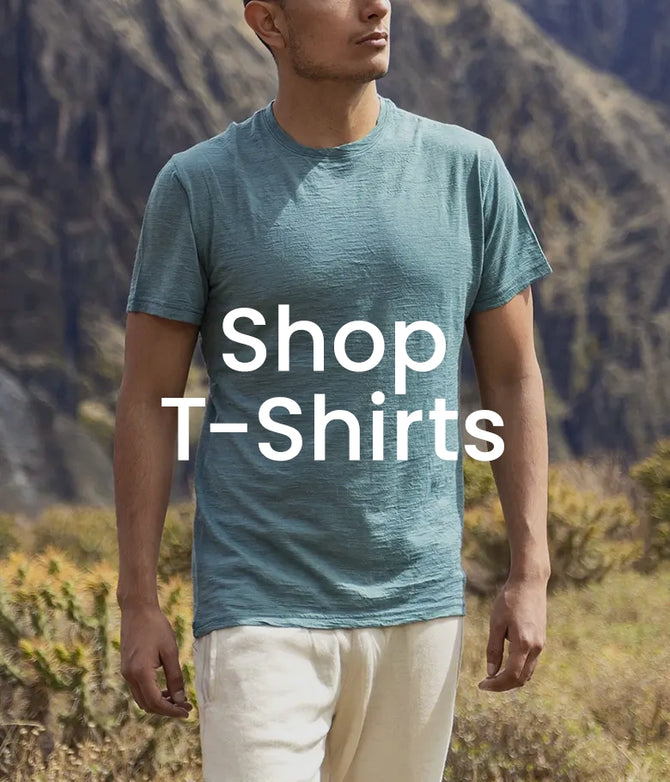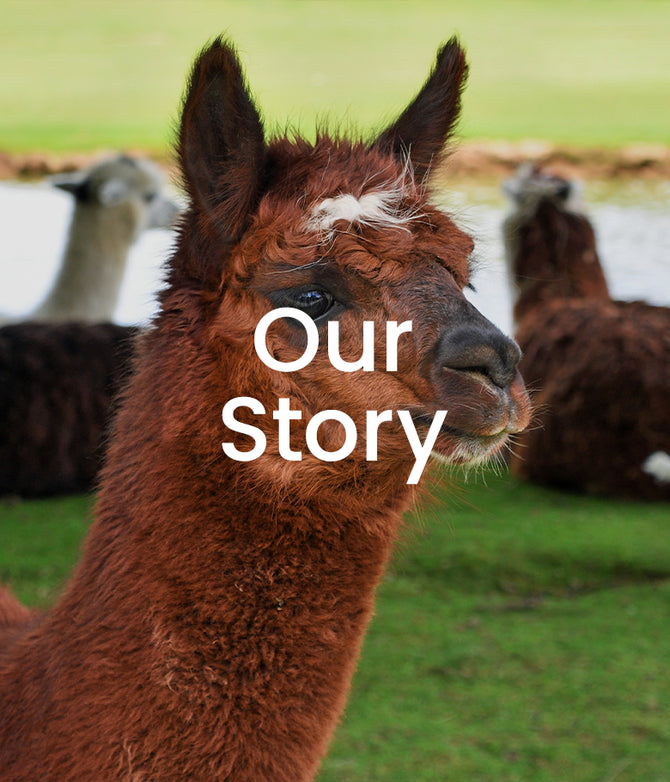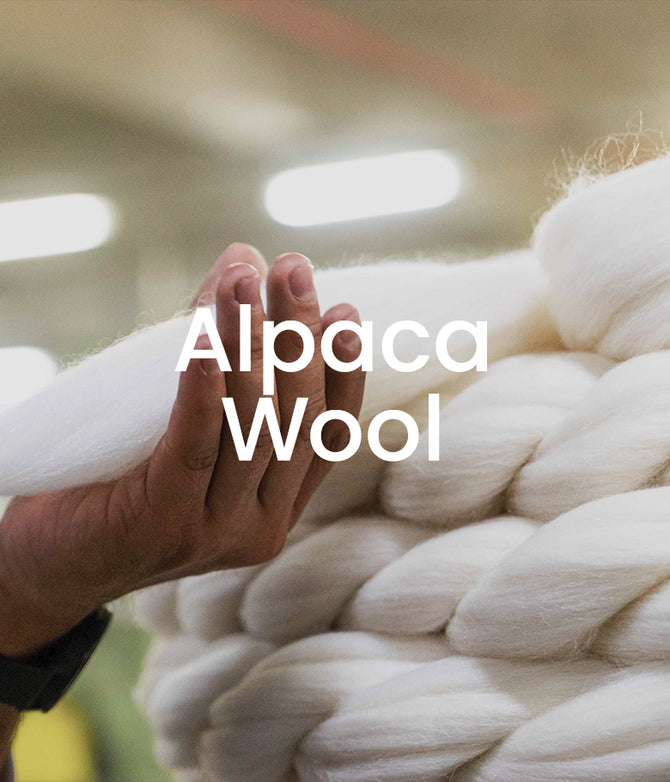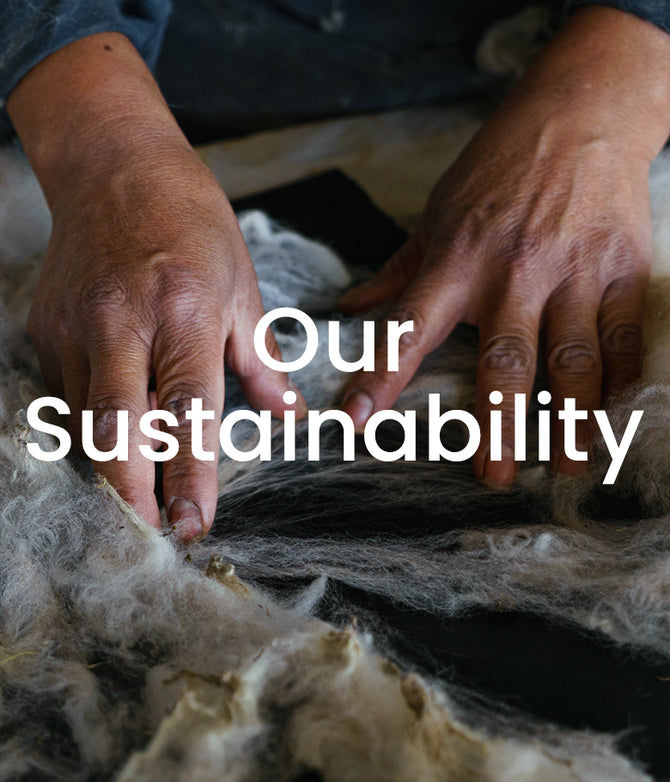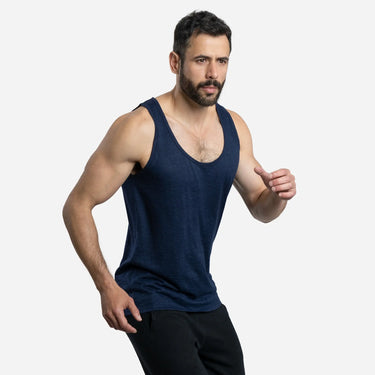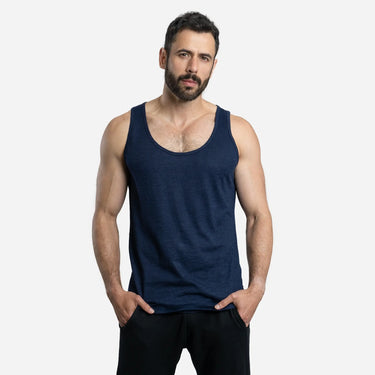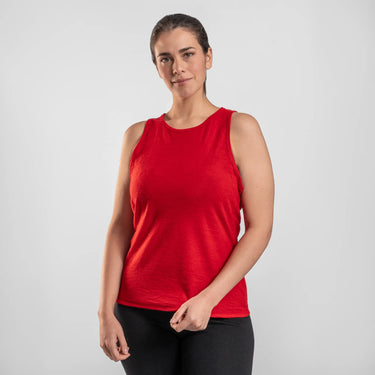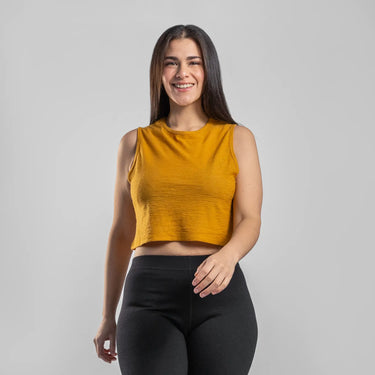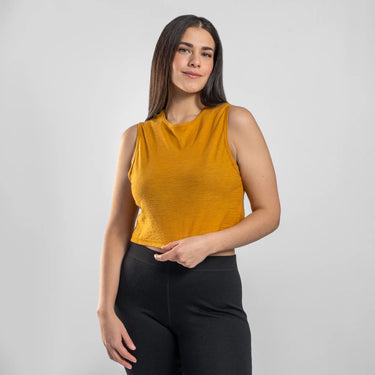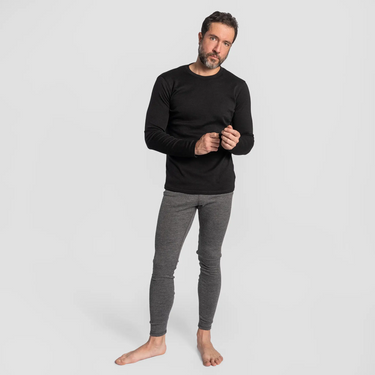Ever wonder what are the most sustainable clothes?
"As manufacturers we have made it our mission to break down all the aspects of clothing production to get to what truly makes clothing eco-friendly."
- Meli
Founder of AoA
Understanding what makes clothes sustainable can get very confusing. Brands are often accused of "green washing": cherry picking an ecological benefit in their clothes and claiming they are a sustainable brand. We at Arms of Andes, as manufacturers, have made it our mission to break down all aspects of apaprel manufacture to get to what truly makes clothing eco-friendly. It is not as simple as just saying biodegradable, organic, or recyclable. There is a whole process to making clothes and each step of the way, we have to push sustainability to the limits. Below is a clear checklist we can use when determining if our clothes are good for us, other animals, and our environment.
1. Where does the material come from?
✔ Does it come from a free-ranging animal, a renewable source, or industrial farming?
2. How it is the raw material made into a fiber?
✔ Do the harvesting and fiber production processes harm the animals or the envirnoment?
3. Where is the fiber combed/carded, spun in to yarn, and sewn into clothes?
✔ Are these processes caried out in one country or shipped all over the world?
4. Will the clothes I am wearing contaminate the environment?
✔ Does the fabric leach chemicals or microplastics when washing? Will it naturally biodegrade when I dispose of it?
*Click on each tab to see the production from the fiber to the clothes.
Our Alpaca apparel is sustainable at every level, we use 100% Andean Alpaca Fibers all produces in Peru. Andean Alpacas are not industrially farmed, they roam freely and are humanely sheared. Alpaca fibers naturally biodegrade, and our production has the lowest carbon footprint.
OUR STEP BY STEP PROCESS:
1. SOURCE OF THE FIBER

The fiber is fleece of free-ranging Andean Alpacas:
2. MAKING THE FIBER

Making the fiber is simple, cut the hair off the Alpaca:
3. FIBER TO CLOTHES

We get the fiber and make the clothes all in Peru:
4. WEARING & DISPOSING

Wearing to disposing Alpaca wool biodegrades:
100% Merino Apparel is naturally biodegradable and also very sustainable (when sheep are ethically raised). Merino wool is currently grown in Australia/New Zealand (and a few other countries) and processed throughout Asia/Eastern Europe, adding to the global footprint.
STEP BY STEP PROCESS:
1. SOURCE OF THE FIBER
Merino wool comes from Australian/New Zealand large-scale sheep farms:
2. MAKING THE FIBER
Making the fiber is simple, cut the hair off the Merino Sheep:
3. FIBER TO CLOTHES
Merino is grown and processed in different countries
4. WEARING & DISPOSING
Wearing, washing, or disposing, Merino naturally biodegrades:
Using recycled polyester is a big improvement on "virgin" synthetic clothing. Recycled or not, polyester will always contaminate the environment and sea-life when washed or disposed of. It's production also has a big carbon footprint, as manufature takes place through various parts of Asia.
1. SOURCE OF THE FIBER
Recycled Polyester comes from plastic (e.g. water bottles):
2. MAKING THE FIBER
Plastic bottles are mechanically processed to make the fibers:
3. FIBER TO CLOTHES
Recycled polyester is processed throughout many countries:
4. WEARING & DISPOSING
Wearing, washing, or disposing, recycled polyester contaminates:
The items below are just as important, but are not dependent on the fiber itself. Therefore it is up to each individual brand to ensure that all components of their clothing are produced in the most sustainable way possible, with the lowest carbon footprint.
- Dyes: no chrome dyes are an improvement, but all natural dyes derived from plants (preferably organic) found in the local environment is always the best. Every piece of clothing may come out different from the next (making industrial standardization difficult), but that just makes it even more unique.
- Thread: This is a small piece but it is what holds the clothing together. Synthetic threads that are synthetically dyed should be avoided. The best and most practical (due to strength and durability) is using 100% cotton: it can be used in industrial machines and is worth the price.
- Labels and Tags: These are usually made with polyester (synthetics) and synthetic dyes, but can easily be made with 100% cotton and vegetable dyes.
- Zippers: This is where it gets tricky, durable and light zippers are hard to make, and making them 100% biodegradable has not been successfully done. In this case the best thing is to use eco zippers made from recycled plastic. The teeth and slider can be metal but it is hard to make durable 100% cotton tape, so some synthetics are currently needed.
- Bands: Bands hold our leggings, bras, and boxers to our bodies and are usually made with some synthetic elastic material. There are very few brands that have put the extra effort in making bands out of sustainable rubber and cotton. Arms of Andes will be testing these out to see how durable they are. Besides this, sustainable alternatives that are durable have been hard to find, but we will keep looking.
- Shipping Material: Many companies have made huge advances on this. There is a technical difference between biodegradable and compostable. In the end, there are great options including recylced and recyclable paper and cardboard as well as compostable cellulose, so plastic packaging is no longer necessary!


